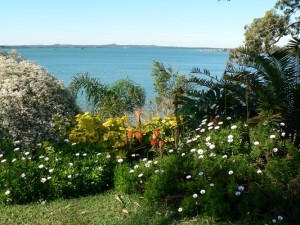Background to the Lamrim
 The last major school of Tibetan Buddhism was founded by the reformer Tsongkh’apa (Tsong kha pa; 1357–1419), on the basis of the Kadampa school and Atisha’s arrangement of teachings in a series of levels, with a purified tantrism at the top. He founded the Gelugpa, or ‘Followers of the Way of Virtue’, whose monks are distinguished from others by the yellow colour of their ceremonial hats.
The last major school of Tibetan Buddhism was founded by the reformer Tsongkh’apa (Tsong kha pa; 1357–1419), on the basis of the Kadampa school and Atisha’s arrangement of teachings in a series of levels, with a purified tantrism at the top. He founded the Gelugpa, or ‘Followers of the Way of Virtue’, whose monks are distinguished from others by the yellow colour of their ceremonial hats.
Tsongkh’apa emphasized the study of Madhyamika, and the following of moral and monastic discipline. He cut down on magical practices and eliminated sexual yoga for monks, other than in visualized form.
In his ‘Great Exposition of the Stages of the Way’ (Lamrim Ch’enmo), he argues that one should progress from seeking a good rebirth (a worldly goal), to seeking liberation for oneself (Hinayana motivation), to seeking Buddhahood so as to aid the liberation of others (Mahayana motivation), with Vajrayana methods then helping to more speedily attain the Mahayana goals. Higher levels of truth or practice are seen to build on, but not subvert, lower ones. Logical analysis prepares the way for direct, non-conceptual insight, and textual transmissions are as important as oral ones.
Source: Taken, with minor edits, from Harvey, P. (2013) An introduction to Buddhism: teachings, history and practices. 2nd edn. Cambridge: Cambridge University Press. (Pp. 207-208.)
- For an MS Word copy of a Lamrim outline, click LAMRIM-Stages of the Path.
- For a PDF copy of another Lamrim outline, click The Lamrim – An Outline – Table.
- For an MS Word copy of the PDF outline, click The Lamrim – An Outline – Table.
